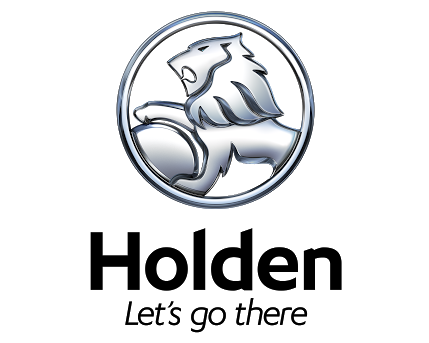Holden - UTE - Workshop Manual - 2010 - 2010
Get your hands on the complete Holden factory workshop software
Download nowGet your hands on the Complete Holden Factory Workshop Software
Download nowGet notified when we add a new HoldenUTE Manual
We cover 60 Holden vehicles, were you looking for one of these?

Holden Commodore VE Omega G8 2008-2011 Service Workshop Manual

Holden - Rodeo - Workshop Manual - 2003 - 2008

Holden - Captiva - Owners Manual - 2016 - 2016

Holden - Colorado - Workshop Manual - 2012 - 2013

Rodeo 4WD V6-3.2L (2004)

Holden Commodore Service Repair Manual PDF

Holden - Barina - Workshop Manual - 2013 - 2013

Holden - Astra - Workshop Manual - 2003 - 2003

Holden Commodore Holden Commodore VY Holden Commodore VY 2004 Workshop Manual

Holden Commodore Holden Commodore VE Holden Commodore VE 2008 2011 Omega G8 TREMEC Manual Transmission Repair Manual

Holden - Cruze - Workshop Manual - 2013 - 2013

Holden - Colorado - Workshop Manual - 2015 - 2015

Holden - Astra - Owners Manual - 2007 - 2010

Holden - Commodore - Workshop Manual - 1997 - 2006

Holden - Viva - Workshop Manual - 2005 - 2005

Holden - Colorado - Workshop Manual - 2017 - 2017 (3)

Holden - Colorado - Workshop Manual - 2014 - 2014 (2)

Holden Commodore Holden Commodore VY Holden Commodore VY 2003 Workshop Manual

Holden - Colorado - Workshop Manual - 2017 - 2017 (2)

Holden - Colorado - Workshop Manual - 2013 - 2013

Holden - Colorado - Workshop Manual - 2014 - 2014

Holden Commodore Holden Commodore VE Holden Commodore VE 2008 2011 Omega G8 Body Repair Manual

Holden - Epica - Workshop Manual - 2007 - 2007

Rodeo (4WD) V6-3165cc 3.2L SOHC (6VD1) (1993)

Holden Commodore Holden Commodore VE Holden Commodore VE 2008 2011 Omega G8 Automatic Transmission 6L50 6L80 6L90 Service Manual

Holden Commodore Holden Commodore VE Holden Commodore VE 2008 2011 Omega G8 5L40 E _ 5L50 E Transmission Repair Manual

Holden Commodore Holden Commodore VY Holden Commodore VY 2002 Workshop Manual

Holden - Caprice - Workshop Manual - 2006 - 2006 (German)

Holden Commodore - Commodore VE - Workshop Manual - (2009)

Holden - Barina - Workshop Manual - 2017 - 2017

Holden - Commodore - Workshop Manual - 2006 - 2006

Holden - Commodore - Workshop Manual - (1997)

Holden - Cruze - Parts Catalogue - 2009 - 2009

Holden Commodore Holden Commodore Common Holden Commodore Common 1997 Service Repair Manual

Holden Commodore Holden Commodore VN Holden Commodore VN 1989 Calais Workshop Repair Manual

Holden - Calais - Workshop Manual - 1984 - 1984

Holden - Barina - Miscellaneous Documents - 2002 - 2002

Holden - Colorado - Miscellaneous Documents - 2016 - 2016

Holden - Vectra - Workshop Manual - 2003 - 2003

Holden - Colorado - Workshop Manual - 2012 - 2012

Holden - Barina - Miscellaneous Documents - 2011 - 2011

Holden Commodore Holden Commodore VE Holden Commodore VE 2008 2011 Omega G8 Other Schematics

Holden - Colorado - Owners Manual - 2017 - 2017

Holden - Barina - Workshop Manual - 1994 - 1994

Rodeo (4WD) L4-2559cc 2.6L SOHC (4ZE1) (1991)

Holden - Calais - Workshop Manual - 2008 - 2008

Holden - Rodeo - Wiring Diagram - 1984 - 1986

Holden - Rodeo - Workshop Manual - 2008 - 2008 (2)

Holden - Colorado - Workshop Manual - 2008 - 2008

Holden Commodore Holden Commodore Common Holden Commodore Common 2000 Service Repair Manual

Holden Commodore Holden Commodore VE Holden Commodore VE 2008 2011 Omega G8 Immobilizer Manual

Holden - Rodeo - Parts Catalogue - 2007 - 2010

Rodeo LS 2WD V6-3165cc 3.2L SOHC (6VD1) (1997)

Holden Commodore Holden Commodore VP Holden Commodore VP 1993 Calais Workshop Repair Manual

Holden Commodore Holden Commodore Common Holden Commodore Common 2002 Service Repair Manual

Rodeo LS 4WD V6-3.2L (1998)

Holden - Barina - Miscellaneous Documents - 2008 - 2008

Holden Commodore Holden Commodore VK Holden Commodore VK 1984 Workshop Repair Manual

Suburban 1-2 Ton 2WD V8-305 5.0L (1985)

Holden Commodore Holden Commodore VN Holden Commodore VN 1988 Calais Workshop Repair Manual

Holden Commodore VE Omega G8 2008-2011 Service Workshop Manual

Holden - Rodeo - Workshop Manual - 2003 - 2008

Holden - Captiva - Owners Manual - 2016 - 2016

Holden - Colorado - Workshop Manual - 2012 - 2013

Rodeo 4WD V6-3.2L (2004)

Holden Commodore Service Repair Manual PDF

Holden - Barina - Workshop Manual - 2013 - 2013

Holden - Astra - Workshop Manual - 2003 - 2003

Holden Commodore Holden Commodore VY Holden Commodore VY 2004 Workshop Manual








































































































































































































































